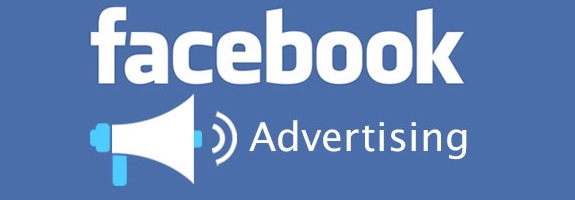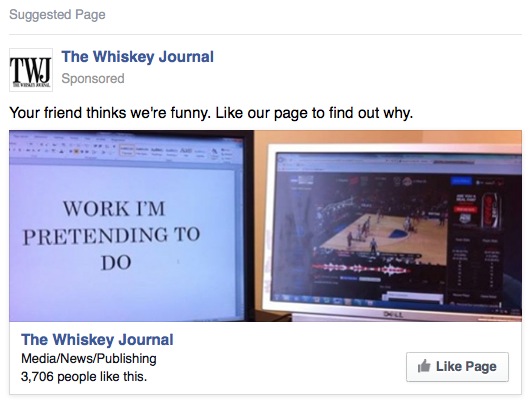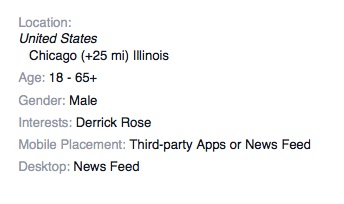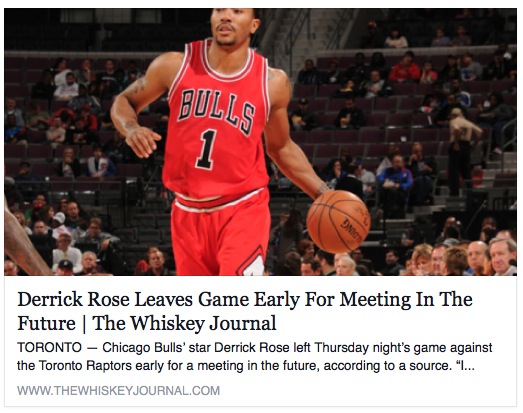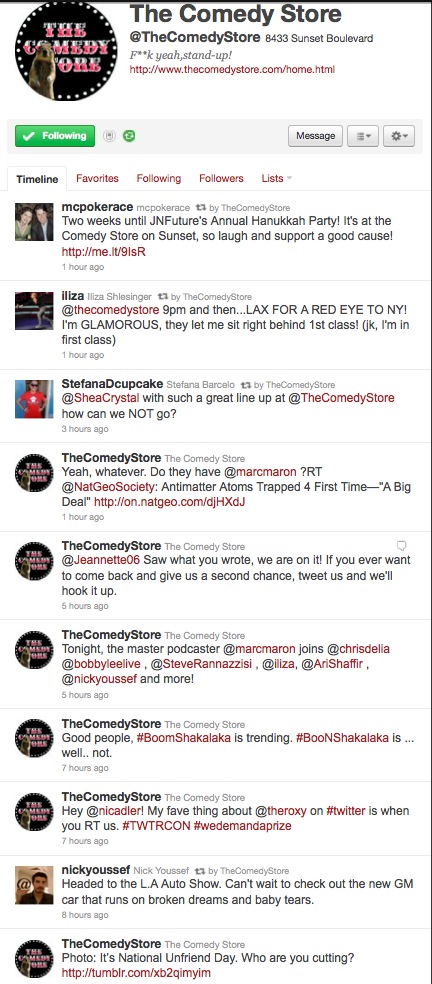2014 is officially history, but it’s never too late to look back and learn from the articles I posted over the course of the year. Thanks to all of you for reading, sharing, contributing, and being a part of the incredible Connected Comedy community that has developed over the past few years – I appreciate it more than you know.
Below is a breakdown of the 20 most-read posts on the site last year with some brief excerpts of each.
And if that’s not enough to keep you busy, go ahead and check out what were my most popular posts in 2012 and 2011.
20. Case Study: How I Got Facebook Fans And Website Traffic For A Comedian
In determining who to target, you always want to go as specific as possible – the more specific you get, the better the ad will perform. Also, you want to think about what the content is about as opposed to what you (or your website) are about.
19. 5 Things You Can Learn From B.J. Novak’s Appearance On The Nerdist Podcast
“That’s what makes the difference,” he said. “One guy after another kills on stage, but with most of them you don’t feel like you need to know who they are.”
18. 5 Things You Can Learn From Canada’s Biggest Comedy Club Owner
“Don’t hang out with other comics,” he says. “Go to the theater, art galleries, music. [An original voice] doesn’t come from watching comics and imitating them.”
17. 5 Things You Can Learn From Jim Norton
“George Carlin had anger, but look how silly a lot of his delivery was. He let his words talk for him and let the audience come with him…or not. He led them with logic instead of doing the emotional work for them.”
16. 7 Simple Ways To Get More Out Of Twitter
It’s a good idea to post important tweets multiple times during the day/week to ensure that more people see it. Stats have proven you’ll get just as many clicks/interactions the second or third time as you do the first and sometimes more.
15. How To Use A “One-Action” Strategy To Activate Your Audience
What you’ve likely lost sight of in the midst of your hustle is that multitasking is a myth. In reality, people don’t take multiple actions at once, they take one single action at a time.
14. 7 Things You Should Know About The Houston Comedy Scene
The crowds range from extremely diverse to extremely homogenous depending on what side of town you’re on. Houston’s strongest comics tailor their material, with minor tweaks, to work in front of whatever audience they’re performing for that night.
13. 7 Things You Can Learn From Dave Foley Of Kids In The Hall
“The audience has to understand the logic of the joke and if you can’t convey that logic in a concise way, it’s not going to work. You must understand that the people hearing the joke are not in your head – they don’t know your back story to your joke. Their entire universe exists from what you write down and if you don’t have the information in the joke, no one is going to get it.”
12. 5 Things You Can Learn About Comedy Promotion From Steve Hofstetter
“If you do something you wouldn’t have done, because of the money, you’re a sellout. If you take money for doing what you love already, you’re just selling. You’re not selling out,” he says.
11. 5 Things You Can Learn From The Colbert Report’s Head Writer
He explains that a comedy career isn’t like becoming a doctor where you study pre-med, go to medical school and follow a clear path. Because there is no clear path to it, he suggests that you have to be willing to work hard and try everything you can to put yourself into a position where you can get opportunities.
10. The Best Audience For An Unknown Comedian To Connect With
It’s one thing to be funny, it’s another to be interesting. Funny is the minimum, but the way to really connect with people on a more long-term level is for them to become interested in you. There’s no one way to do that, but if you think about it, most comedians that build large, passionate, fanbases have done so with more than just their ability to make people laugh.
9. 5 Things You Can Learn From Adam Carolla On The Solopreneur Hour Podcast
Carolla explains that early on in his career he realized he was not going to be the kind of person who was going to just nail an audition and land a gig. He realized nobody trusted him or thought he was anything special. Taking that into account, he decided early on that if he was going to succeed, he was going to have to create his own vehicle.
8. 7 Things You Can Learn From Manager/Producer Barry Katz
“There’s no way you can’t make money in this business if you get up every morning at six and work till two on your craft and do everything in your power to,” he says. “The only way you can’t make it is if you’re self destructive, doing drugs; if you’re lazy, if you have a sense of entitlement, or if you’re mean or disingenuous.”
7. How 5 Successful Comedians Used Their Websites Before They Got Famous
With a little help from the Internet Archive, I thought I’d go back in time and show you some of the things that today’s biggest comics were doing years ago – when both their fanbases and the Internet audience as a whole was a fraction of what it is today. It’s a good reminder that success online doesn’t happen overnight and that most comics who have made it were putting in work years before you may have realized it.
6. 7 Things You Should Know About The New York Comedy Scene
New York is a very safe place to fail. You can do all manner of crazy stuff here. If it works, everyone thinks you’re wonderful. If it doesn’t, no one cares and it’ll be forgotten about next week. So swing for the fences.
5. 10 Lessons From A Comedian’s First 500 Days In Los Angeles
Sure, open mics are great, especially when you’re starting out, but I think it’s important to make sure you’re getting what you want out of these nightly segments. Think about what you can do with that four-hour stretch rather than just conforming to this idea that “more open mics = better comedian.”
4. 5 Things You Can Learn From Gabriel Iglesias
Early on he also made a conscious decision to maintain a consistent look – in his case it involved shorts and a Hawaiian shirt. He explains that it’s tough enough for people to remember specific comics in general, but comics who constantly change their look only make it harder on themselves.
3. 10 Things You Should Know About The San Francisco Comedy Scene
The audition process starts with the Sunday Showcase at the Punch Line. You purchase a punch card, show up for a year, and then get your chance to do five minutes. If that goes well, you get back up in three to six months, eventually graduating to off-night Cobb’s showcases and an audition if all goes according to plan. If you pass your audition, you’re added to the rotation of openers, which currently numbers around 70.
2. 5 Things You Can Learn From Comedy Central’s Head Of Talent
Larsen explains that advertising sales are ultimately what runs a TV network and that “controversy is not a good thing to sell advertising.” This means if you want to get on TV, being unnecessarily blue or racy will hurt your chances. He also discusses the importance of continuing to create new things even after you get a break or some exposure. He hates having an opportunity spring up for a person, only to have them not prepared to go with new material from the last time they got their shot.
1. Louis CK and Doug Stanhope Discuss Being A Healthy Comedian On A 2005 Message Board
I don’t mean looks, I don’t mean weight. I maintain a pretty good belly. I just mean getting yourself ready, steeling yourself, improving your abilities and strengths as a person. Given the odds of making it as a comedian, I am amazed at how little effort so many comedians make, while complaining bitterly about their lack of breaks. I mean, you should be thinking like an olympic athlete but you think like dorito-eating high school brats, doing nothing and expecting everything.
Thanks again for making this a great year for Connected Comedy – can’t wait to see what comes in 2015!




